Through a focus on a series of critical historical issues and debates (class XI) or on a range of important historical sources (class XII), the students would be introduced to a set of important historical events and processes. A discussion of these themes, it is hoped, would allow students not only to know about these events and processes, but also to discover the excitement of reading history.
Important highlights of CBSE Class 12 History Syllabus 2018-19 are given below
|
Units |
Marks |
Periods |
|
Themes in Indian History Part-I Units 1 - 4 |
25 |
55 |
|
Themes in Indian History Part-II Units 5 - 9 |
25 |
65 |
|
Themes in Indian History Part-III Units 10 - 15 |
25 |
80 |
|
Unit 16 : Map Work |
05 |
10 |
|
Project work |
20 |
10 |
|
|
100 (Marks) |
220 (Periods) |
Class 12: Themes in Indian History
PART - I
- The Story of the First Cities: Harappan Archaeology.
Broad overview: Early urban centres.
Story of discovery: Harappan civilization
Excerpt: Archaeological report on a major site.
Discussion: How it has been utilized by archaeologists/historians.
- Political and Economic History: How Inscriptions tell a story.
Broad overview: Political and economic history from the Mauryan to the Gupta period.
Story of discovery: Inscriptions and the decipherment of the script. Shifts in the understanding of political and economic history.
Excerpt: Asokan inscription and Gupta period land grant.
Discussion: Interpretation of inscriptions by historians.
- Social Histories: Using the Mahabharata
Broad overview: Issues in social history, including caste, class, kinship and gender.
Story of discovery: Transmission and publications of the Mahabharata.
Excerpt: from the Mahabharata, illustrating how it has been used by historians.
Discussion: Other sources for reconstructing social history.
- A History of Buddhism: Sanchi Stupa
Broad overview:
(a) A brief review of religious histories of Vedic religion, Jainism, Vaisnavism, Saivism.
(b) Focus on Buddhism.
Story of discovery: Sanchi stupa
Excerpt: Reproduction of sculptures from Sanchi.
Discussion: Ways in which sculpture has been interpreted by historians, other sources for reconstructing the history of Buddhism.
PART-II
- Agrarian Relations: The Ain-i- Akbari
Broad overview:
(a) Structure of agrarian relations in the 16th and 17th centuries.
(b) Patterns of change over the period.
Story of Discovery: Account of the compilation and translation of Ain-i-Akbari.
Excerpt: from the Ain-i-Akbari
Discussion: Ways in which historians have used the text to reconstruct history.
- The Mughal Court: Reconstructing
Histories through Chronicles
Broad overview:
(a) Outline of political history 15th-17th centuries.
(b) Discussion of the Mughal court and politics.
Story of Discovery: Account of the production of court chronicles, and their subsequent translation and transmission.
Excerpts: from the Akbarnama and Padshahnama.
Discussion: Ways in which historians have used the texts to reconstruct political histories.
- New Architecture: Hampi (13)
Broad overview:
(a) Outline of new buildings during Vijayanagar period-temples, forts, irrigation facilities.
(b) Relationship between architecture and the political system.
Story of Discovery: Account of how Hampi was found.
Excerpt: Visuals of buildings at Hampi
Discussion: Ways in which historians have analyzed and interpreted these structures.
- Religious Histories: The Bhakti-Sufi Tradition
Broad overview:
(a) Outline of religious developments during this period.
(b) Ideas and practices of the Bhakti-Sufi saints.
Story of Transmission: How Bhakti-Sufi compositions have been preserved.
Excerpt: Extracts from selected Bhakti-Sufi works.
Discussion: Ways in which these have been interpreted by historians.
- Medieval Society through Travelers'
Accounts
Broad overview:
Outline of social and cultural life as they appear in travelers' accounts.
Story of their writings: A discussion of where they travelled, why they travelled, what they wrote, and for whom they wrote.
Excerpts: from Alberuni, Ibn Batuta, Bernier.
Discussion: What these travel accounts can tell us and how they have been interpreted by historians.
PART - III
- Colonialism and Rural Society: Evidence from Official Reports
Broad overview:
(a) Life of zamindars, peasants and artisans in the late 18th century
(b) East India Company, revenue settlements and surveys.
(c) Changes over the nineteenth century.
Story of official records: An account of why official investigations into rural societies were undertaken and the types of records and reports produced.
Excerpts: From Firminger's Fifth Report, Accounts of Frances Buchanan-Hamilton, and Deccan Riots Report.
Discussion: What the official records tell and do not tell, and how they have been used by historians.
- Representations of 1857
Broad overview:
(a) The events of 1857-58.
(b) How these events were recorded and narrated.
Focus: Lucknow.
Excerpts: Pictures of 1857. Extracts from contemporary accounts.
Discussion: How the pictures of 1857 shaped British opinion of what had happened.
- Colonialism and Indian Towns:
Town Plans and Municipal Reports
Broad overview: The growth of Mumbai,
Chennai, hill stations and cantonments in the 18th and 19th centuries.
Excerpts: Photographs and paintings. Plans of cities. Extract from town plan reports. Focus on Kolkata town planning.
Discussion: How the above sources can be used to reconstruct the history of towns. What these sources do not reveal.
- Mahatma Gandhi through Contemporary (13)
Eyes
Broad overview:
(a) The Nationalist Movement 1918 - 48.
(b) The nature of Gandhian politics and leadership.
Focus: Mahatma Gandhi in 1931.
Excerpts: Reports from English and Indian language newspapers and other contemporary writings.
Discussion: How newspapers can be a source of history.
- Partition through Oral Sources
Broad overview:
(a) The history of the 1940s.
(b) Nationalism, Communalism and Partition.
Focus: Punjab and Bengal.
Excerpts: Oral testimonies of those who experienced partition.
Discussion: Ways in which these have been analyzed to reconstruct the history of the event.
- The Making of the Constitution
Broad overview:
(a) Independence and the new nation state.
(b) The making of the Constitution.
Focus: The Constitutional Assembly debates.
Excerpts: from the debates.
Discussion: What such debates reveal and how they can be analyzed.
- Map Work on Units 1-15
- Project Work (10 periods)
Please refer Circular for project work guidelines.
Project work will help students:
- To develop skill to gather data from a variety of sources, investigate diverse viewpoints and arrive at logical deductions.
- To develop skill to comprehend, analyze, interpret, evaluate historical evidence and understand the limitation of historical evidence.
- To develop 21st century managerial skills of co-ordination, self-direction and time management.
- To learn to work on diverse cultures, races, religions and lifestyles.
- To learn through constructivism-a theory based on observation and scientific study.
- To inculcate a spirit of inquiry and research.
- To communicate data in the most appropriate form using a variety of techniques.
- To provide greater opportunity for interaction and exploration.
- To understand contemporary issues in context to our past.
- To develop a global perspective and an international outlook.
- To grow into caring, sensitive individuals capable of making informed, intelligent and independent choices.
- To develop lasting interest in history discipline.
List of Maps
Book 1
- P-2.
Mature Harappan sites:
Harappa, Banawali, Kalibangan, Balakot, Rakhigarhi, Dholavira, Nageshwar, Lothal, Mohenjodaro, Chanhudaro, Kot Diji.
- P-30.
Mahajanapada and cities :
Vajji, Magadha, Kosala, Kuru, Panchala, Gandhara, Avanti, Rajgir, Ujjain, Taxila, Varanasi.
- P-33.
Distribution of Ashokan inscriptions:
(i) Kushanas, Shakas, Satavahanas, Vakatakas, Guptas
(ii) Cities/towns: Mathura, Kannauj, Puhar, Braghukachchha
(iii) Pillar inscriptions - Sanchi, Topra, Meerut Pillar and Kaushambi.
(iv) Kingdom of Cholas, Cheras and Pandyas.
- P-43.
Important kingdoms and towns:
(i) Kushanas, Shakas, Satavahanas, Vakatakas, Guptas
(ii) Cities/towns: Mathura, Kanauj, Puhar, Braghukachchha, Shravasti, Rajgir, Vaishali, Varanasi, Vidisha
- P-95.
Major Buddhist Sites:
Nagarjunakonda, Sanchi, Amaravati, Lumbini, Nasik, Bharhut, BodhGaya, Shravasti, Ajanta.
Book 2
- P-174.
Bidar, Golconda, Bijapur, Vijayanagar, Chandragiri, Kanchipuram, Mysore, Thanjavur, Kolar, Tirunelveli, Quilon
- P-214.
Territories under Babur, Akbar and Aurangzeb: Delhi, Agra, Panipat, Amber, Ajmer, Lahore, Goa.
Book 3
- P-297.
Territories/cities under British Control in 1857:
Punjab, Sindh, Bombay, Madras Fort St. David, Masulipatam, Berar, Bengal, Bihar, Orissa, Avadh, Surat, Calcutta, Daccan, Chitagong, Patna, Benaras, Allahabad and Lucknow.
- P-305.
Main centres of the Revolt:
Delhi, Meerut, Jhansi, Lucknow, Kanpur, Azamgarh, Calcutta, Benaras, Gwalior, Jabalpur, Agra, Avadh.
- P-305.
Important centres of the National Movement:
Champaran, Kheda, Ahmedabad, Benaras, Amritsar, Chauri Chaura, Lahore, Bardoli, Dandi, Bombay (Quit India Resolution), Karachi.
Prescribed Books:
- Themes in Indian History, Part I, Class XII, Published by NCERT
- Themes in Indian History Part-II, Class XII, Published by NCERT
- Themes in Indian History Part-III, Class XII, Published by NCERT
Note: The above textbooks are also available in Hindi medium.
History is more of a conceptual understanding of the topics which is then translated into one's own words, rather than a mugging up of the textbook. The candidates who are appearing for the class 12 History board exam, can check the last minute tips, tricks and points to remember during the examination.
Students can check the video for tips provided by Renu Adhikari from Ramjas School, New Delhi, to know more about which parts of the syllabus should be stressed on.
6 quick tips to score good marks in History
- Pay attention to source questions, map questions and two markers
- Be thorough with your textbook
- Underline the difficult words
- Don't cramp the language
- Understand the concepts
- Answer the questions in a simple language




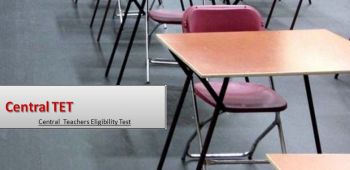
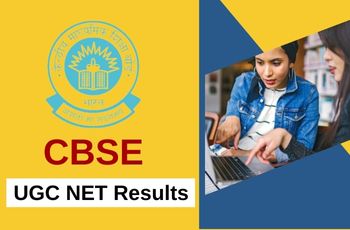
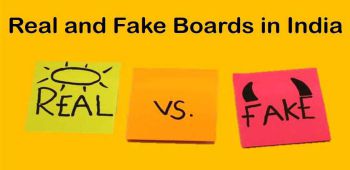











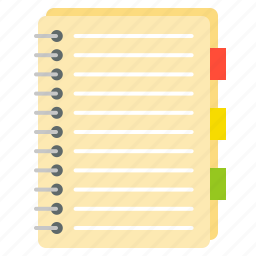
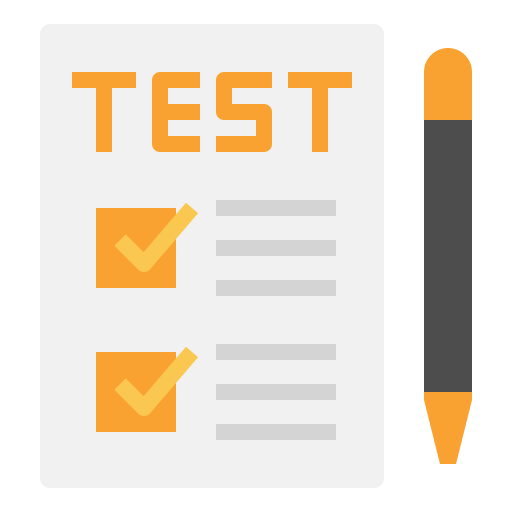
Comments